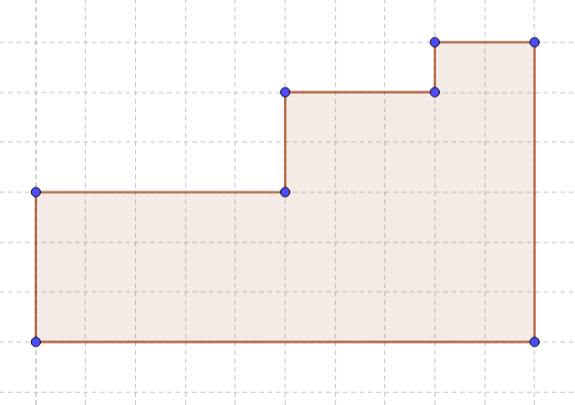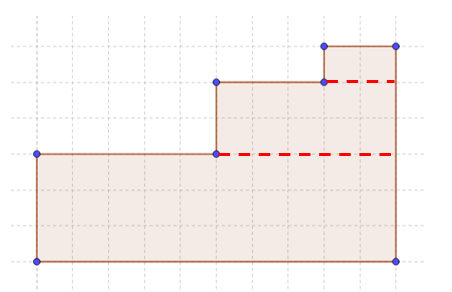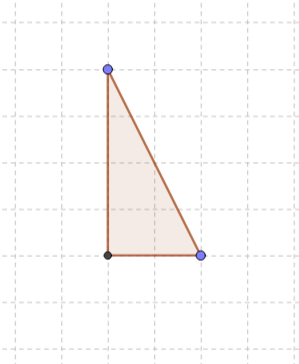How decomposition is used to find areas of irregular shapes?
The decomposition of an irregular figure made up of rectangles can be done in multiple ways. Take a look at the given figure.
In this first one, two horizontal lines are drawn and the given figure is separated into three rectangles; 2x1, 5x2 and 10x3.
In this first one, two vertical lines are drawn and the given figure is separated into three rectangles; 2x6, 3x5 and 5x3.
In both cases the total area that is calculated is the same, but the way in which the area is found can be different.
Area of the triangle by decomposition method
What happens when the given shape does not contain horizontal and vertical lines only?
For example, take this triangle
If the same concept of counting squares is followed, here we find incomplete squares as well, and how to count them. Firstly the full squares are denoted as squares a and b whereas other triangles are denoted as c1, c2, and d1, d2. Now when we see the incomplete unfilled parts of the squares containing c1 and d2 we find that they can be fulfilled with c2 and d1 respectively. Now, when the remaining parts are flipped and pasted into those areas, we get a rectangle of size 4 by 1 thus the area is 4 unit squares.




